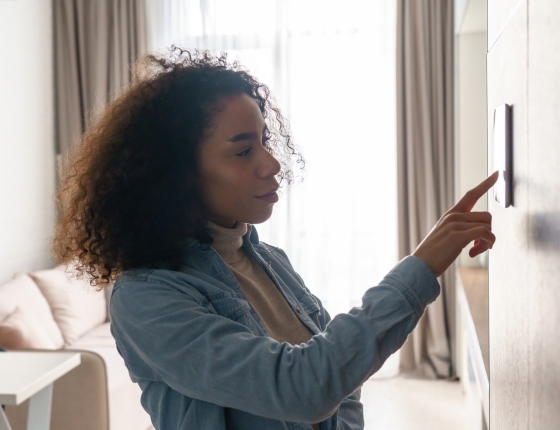Over the past year, there has been a lot of talk about the upcoming energy efficiency and electrification incentives that will stem from the Inflation Reduction Act (IRA). As we wait to see the full impact of all these incentives, homeowners have been asking many questions regarding which incentives are already available for energy efficiency projects and who qualifies.
To help answer some of these questions and simplify what is already and will soon be available through the IRA, we have put together a list of the most frequently asked questions our energy advisors have received about tax credits, rebates, incentive stacking, qualifications, and more. Some programs established by the IRA are still being created, which means some of these answers might change in the upcoming year, so check back for updates.
What do the Home Energy Rebates cover and when will they be available?
Under the IRA, two Home Energy Rebate programs were created, the Home Efficiency Rebates program and the Home Electrification and Appliance Rebates program. Together, these programs will invest over $8 billion in electrification and efficiency upgrades throughout the U.S. Neither rebate program is available yet.
The Home Efficiency Rebate (HER) program (formerly known as HOMES) is designed for single-family and multifamily whole-home upgrades, including weatherization and air-sealing. These rebates may be available for all income levels and are doubled for low-income customers.
The Home Electrification and Appliance Rebates (HEAR) program (formerly known as HEEHRA) is specific to electrification appliance upgrades, including air source heat pumps, heat pump water heaters, kitchen appliances, and some building material upgrades. This program does have income guidelines, though the State has leeway to adjust eligibility and rebate amounts through its program design.
The federal guidance for the program design offers a framework where eligible recipients must fall below 150% area median income (AMI), and low-income customers can get up to 100% of project costs covered. The maximum rebate that can be claimed under this program is $14,000.
Currently, the Minnesota Department of Commerce is expecting these rebates to be available to homeowners beginning in late 2024 or early 2025. To see a full breakdown of this timeline and stay up to date, you can visit the Minnesota Department of Commerce Website.
What tax credits are currently available?
The 25C tax credit is currently available, and we encourage homeowners to take advantage of it! There are no income requirements to earning the tax credit. You cannot receive an IRA credit that is larger than your tax liability. If you complete qualifying work this year and other qualifying work in a different tax year, you can earn the tax credit for each qualifying project. In other words, completing projects over time is a good way to maximize this incentive. Find more information about the tax credits here.
This tax credit is available for qualified high-efficiency equipment, weatherization (insulation, windows, doors) projects, and electrification projects including installing heat pumps, heat pump water heaters, and more. You can find a full list of qualifying upgrades here.
With the tax credit, homeowners can earn up to 30% of qualified expenses, including qualified energy efficiency improvements, residential energy property expenses, and home energy audits. The maximum credit homeowners can earn each year is $2,000 for heat pumps and heat pump water heaters, and up to $1,200 for all other upgrades, including insulation, air conditioners, furnaces, boilers, water systems, and more. In total, homeowners can earn up to $3,200 per year with the 25C tax credit. For most eligible projects, this tax credit can be applied to both labor and material costs. The one exception to this is insulation projects. The credit will only apply to the insulation materials, not the cost of hiring an insulation contractor.
To earn this tax credit, work with your contractor to make sure that the specific equipment, product, or material you are using qualifies for the credit. Then, when you file for your taxes, you will have to provide your project information and apply for the credit. To make this process as easy as possible, we encourage customers to ask their contractor to provide the material and labor cost on their final paid invoices.
Are the rebates and tax credits stackable?
Yes, customers will be able to stack (i.e., combine) tax credits and other rebate programs on top of their Home Efficiency Rebate and Home Electrification and Appliance Rebate. States are highly encouraged to design their rebate programs in a way that allows for the most effective combinations of various funding sources. Currently, we expect the 25C tax credit, other financing sources, including federal loans and CEE’s statewide and city loans, and state, utility, and local rebates to stack on top of each other to maximize upgrade savings.
Should I do my project now or should I wait until the rebate programs are available?
Deciding whether to complete a project now or wait for the rebate programs will vary for everyone. The main factors to consider are how quickly you need to make the upgrade, which incentives are available now that you are eligible for, and what is the likelihood that your household income will fall within the IRA rebate income limits. For example, if you know that your heating system needs to be replaced soon or need to insulate your attic within the next year, it is likely not worth waiting for the rebates to become available. Right now, the 25C tax credit and robust utility rebates are available and can significantly offset the cost of your weatherization and electrification upgrades. However, if these upgrades aren’t urgent and you think you may fall within the household income limits, waiting might make sense for you.
For more information on whether you should act now or wait, check out this blog post from the ASHP Collaborative.
